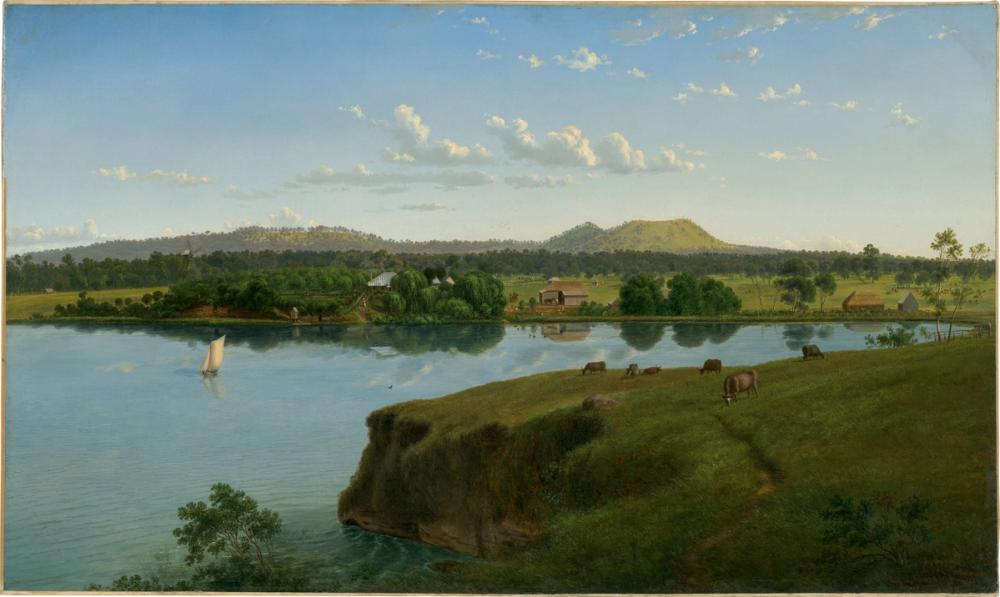
1858 - Purrumbete from across the lake
Eugene von Guerard
Habitat: Victorian Volcanic Plain - Plains Grassy Woodland1
Endangered 8.3% remaining2
Oil on canvas
H 51 x W 85.5 cm
National Gallery of Australia
libraryofnature.com
Bioregion: Southern Volcanic Plain (2.2% protected)3
An extensive undulating basaltic plain in south-western Victoria, stretching from Melbourne west to Portland, south to Colac and north to Beaufort. It is characterised by vast open areas of grasslands, small patches of open woodland, stony rises denoting old lava flows, the low peaks of long extinct volcanoes dotting the landscape and numerous scattered large shallow lakes with extensive wetlands.
The grassland communities are floristically rich, usually dominated by Kangaroo Grass with a wide variety of perennial herbs. The open and fertile grassy plains were one of the first areas settled for agriculture in Victoria and native grasslands are now reduced to a few thousand hectares in extent. The major land use is agriculture, especially sheep and cattle grazing and cropping.4
Eugene von Guerard5
Johann Joseph Eugene von Guérard (17 November 1811 – 17 April 1901) was an Austrian-born artist, active in Australia from 1852 until 1882. Known for his finely detailed landscapes in the tradition of the Düsseldorf school of painting, he is represented in Australia's major public galleries, and is referred to in the country as Eugene von Guerard.
In 1852 von Guerard arrived in Victoria, Australia, determined to try his luck on the Victorian goldfields. As a gold-digger he was unsuccessful, but he did produce a large number of intimate studies of goldfields life, quite different from the deliberately awe-inspiring landscapes for which he was later to become famous.
By the early 1860s von Guerard was recognised as the foremost landscape artist in the colonies, touring Southeast Australia and New Zealand in pursuit of the sublime and the picturesque. He is most known for the wilderness paintings produced during this time, which are remarkable for their shadowy lighting and fastidious detail. Indeed, his view of Tower Hill in south-western Victoria was used as a botanical template over a century later when the land, which had been laid waste and polluted by agriculture, was systematically reclaimed, forested with native flora and made a state park.
Artwork of species found nearby

See more »
1854 - Superb Fairywren
Elizabeth Gould

See more »
1854 - Scarlet robin
Elizabeth Gould

See more »
1854 - Superb Fairywren
Elizabeth Gould

See more »
1854 - Rose robin
Elizabeth Gould

See more »
1854 - Eastern Yellow Robin
Elizabeth Gould

See more »
1854 - Red-capped robin
Elizabeth Gould